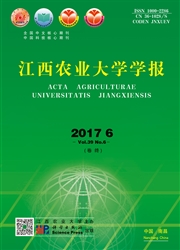

 中文摘要:
中文摘要:
选用硫酸铜作为实验铜源,向肉鸡肝细胞悬液中加入不同剂量的铜(铜终浓度分别为5μmol/L、10μmol/L、20μmol/L、30μmol/L),孵育15 min后,利用新型荧光探针JC-1标记肉鸡肝细胞线粒体,在流式细胞仪上检测JC-1荧光强度的变化,观察铜对肉鸡肝细胞线粒体膜电位(△Ψm)变化的影响。结果显示:正常肝细胞线粒体维持较高的膜电位,JC-1在线粒体内形成聚合物的红色荧光占主导地位。用不同浓度的铜处理肝细胞可导致线粒体膜电位下降,JC-1聚合物分解成单体,红色荧光强度减弱,并具有时间依赖性。此结果表明,铜(Ⅱ)能导致肉鸡肝细胞线粒体膜电位下降,暗示铜对体细胞的毒害作用可能是通过瓦解机体细胞线粒体膜电位来实现的。
 英文摘要:
英文摘要:
Copper sulfate as the source of copper( Ⅱ ), after incubating the broiler liver cell with Cu^2+ of 0μmoL/L, 5 μmoL/L,10 μmol/L, 20 μmol/L, 30 μmol/L respectively for 15 min respectively, JC - 1, a new fluorescent probe, in combination with flow cyometry was used to detect the effect of Cu^2+on broiler liver cell mitochondrial membrane potential(△Ψm) , The results showed that: The effect of Cu^2+ on broiler liver cell mitochondrial membrane potential had dose - dependence, the normal liver ceils maintained high mitochondrial membrane potential, red fluorescent dominated in the mitochondria produced by JC - 1, liver cells treated with different concentrations of Cu^2+ would result in decrease of mitochondrial membrane potential, JC - 1 aggregate decomposed into monomer, intensity of red fluorescent weakened. The result showed that Cu^2+can lead to the decline of broiler liver cell mitochondrial membrane potential which indicates that the poisoning effect of copper to cells may be achieved through the way of collapsing its mitochondrial membrane potential.
 同期刊论文项目
同期刊论文项目
 同项目期刊论文
同项目期刊论文
 期刊信息
期刊信息
